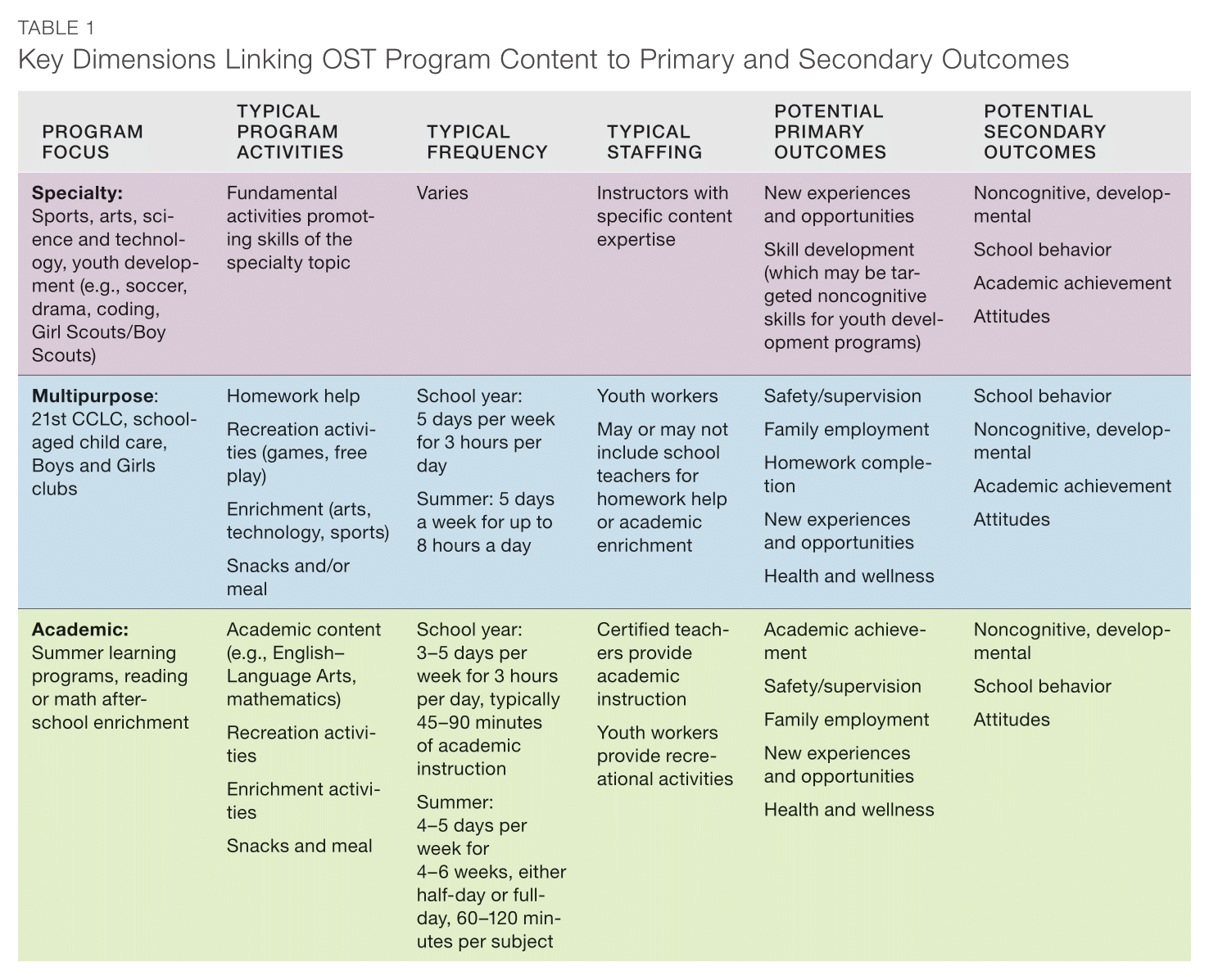Lowered dropout rates and 4 other ways to encourage youth accomplishment through After School Programs
Lowered dropout rates and 4 other ways to encourage youth accomplishment through After School Programs

1. Lowered dropout rates
After school programs for teenagers help keep students on track for graduation. The Global Family Research Project, formerly the Harvard Family Research Project, released a series that found “expanded learning opportunities,” saw increased school attendance and lower dropout rate when run effectively. They defined such opportunities as “structured learning environments outside the traditional school day,” which include after school and summer programming.
2. Improved academic performance
Education disguised by enrichment activities in a lower stakes environment than four classroom walls can bring a more positive attitude and excitement about learning new things. Youth academic programs that focus specifically on academic content and filling learning gaps resulted in academic achievement based on research analyzed by the RAND Corporation. After school programs that are not academic in nature may still offer homework assistance. And while research showed homework help offered in multi-purpose programs did not result in higher test scores, it’s worth noting there are many potential benefits outside of improved scores. For example, an emphasis on homework help can develop better academic habits like assignment completion and study skills. Programs often have positive consequences on school attendance as well when they make it a requirement in order to attend after school.
3. Varied and personalized activities
As youth get older, they have more freedom to choose how they spend their time. Teens vote with their feet. If they don’t like going somewhere, they very easily can simply stop going. That is why it is imperative that after school programs for teenagers put extra focus on keeping things fresh and fun.
And this may not mean whatever was fun for the adult employees when they were teens. The same things may not be considered fun for the newer generations. Youth workers need to stay up-to-date on what the youth they serve are looking for and interested in. The best way to find out is ask. Giving youth a choice in activities and getting their feedback or suggestions helps ensure the activities offered are meeting expectations.
Two big sources of interest amongst youth recently have been movement and technology. Much of the pandemic forced youth indoors and limited their physical activity. Hours upon hours were spent sitting down in front of a video call for class. Now, many young people seek ways to stay active or incorporate movement into their education. And while the widespread use of virtual learning brought digital platforms into the frontline of education, teens may be interested in even more cutting edge materials like virtual reality and artificial intelligence. After school programs that offer such activities not only give youth a stimulating learning experience, but also prepare them for the ever-changing world around us.
4. Small ratios and peer-to-peer engagement in positive settings
With some schools across the nation facing teacher shortages and large class sizes making it easy to fall through the cracks, after school programs that can offer a smaller ratio of youth to staff add opportunities for youth to have a positive relationship with a caring adult. Youth workers can act as mentors and share more small group time with youth than can be afforded throughout the school day. The RAND Corporation found a good relationship between youth and staff supported positive youth development such as academic achievement and social skills. The smaller ratios also create positive and controlled environments for youth to practice social skills with their peers. Thus, after school programs and their activities create ways to build teen communication skills.
5. Workforce preparation and soft skills
Communication skills aren’t the only non-academic abilities improved through participation in after school programs. In fact, when programs target specific skills, participants often show improvements in said skills. In the past, programs have seen improvements in youth self-perceptions, bonding to school, positive social behaviors, and academic achievement—along with reductions in problem behaviors when targeting those outcomes specifically. After school programs help develop other skills often sought by employers such as critical thinking, problem solving, conflict resolution, teamwork, leadership, etc.
Speaking of employers, a great feature of after school programs for teenagers is the exposure to potential careers. Programs can use guest speakers, workshops, field trips, job shadowing, and long-term partnerships with local employers to show youth what opportunities are out there for them. These experiences also help youth develop skills that can come into play when applying for certain careers related to woodworking, visual art, culinary arts, cosmetology, engineering, and more.

After School Programs are game changers
While it should come as no surprise that after school programs have a host of benefits, there are still those that are on the fence about whether to support an increase in funding and available programs. Keep in mind the amazing advantages really come when programs operate efficiently and youth attend regularly. Programs should commit to reflection and consistent improvement, while also communicating to youth the need to attend regularly in order to notice the benefits. No-cost programs like Next Step To Success view “payment” as being not financial, but rather the commitment to participate and regularly attend. When programs commit to excellence and youth commit to attendance, youth accomplishment reaps the rewards.
© Next Step To Success. All Rights Reserved. Sitemap | Privacy Policy